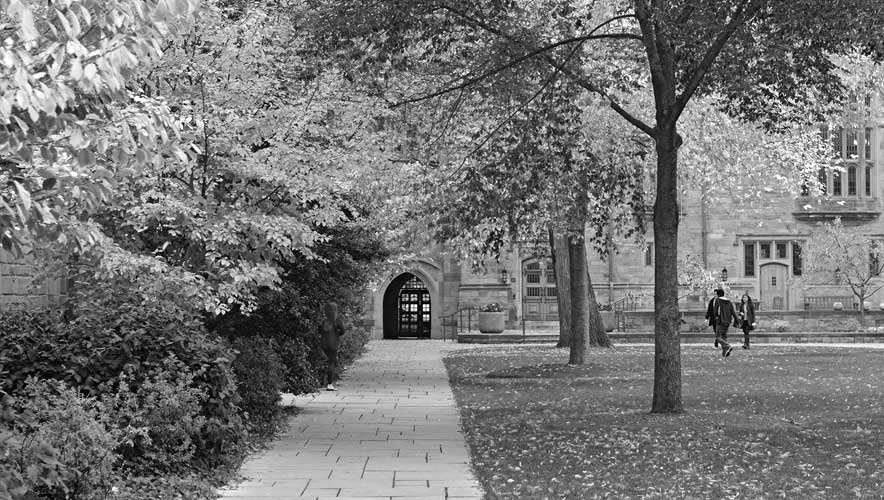Yale Opens Doors
When an anonymous person phoned in an active shooter threat to Yale University in November 2013, the central campus in New Haven, Connecticut, went into lockdown mode, and everyone was ordered to shelter in place.
The FBI and several other law enforcement agencies responded to the situation. No gunman was ever located, but Ronnell Higgins, the university’s chief of police and director of public safety, says the incident provided an opportunity for the campus to evaluate its overall safety and security posture.
“We looked at what happened versus what we want to happen in the future and, by injecting different technology and processes in, how we will improve the narrative if something similar occurs again,” Higgins says.
Active shooters are a rare occurrence at any university, including Yale, but there are a number of daily challenges the educational institution faces because it’s home to 11,000 students and a 3,200-member faculty.
“The Yale University campus is truly woven into the tapestry of the city of New Haven,” he notes, adding that there is a balance between creating a welcoming, open environment and providing security. “We don’t want to turn the place into a fortress, but we have to be ever so cognizant of the environment and our obligation to provide safety.”
While the public safety department had significantly reduced one of its biggest problems—larceny—over the last five years, Higgins says that campus law enforcement wanted to do more to not only reduce crime, but improve overall efficiencies when it came to access control.
After the active shooter threat, the vendor for Yale’s access control system began phasing out its technology. So, working with its dedicated in-house IT team, the public safety department decided on three major goals to address in updating the access control system.
They were: have a single point from which to manage access control; increase security around the movement of students, employees, and visitors; and increase overall efficiencies, including mobilizing credentials and streamlining lockdown procedures.
To determine which access control technology was most appropriate for Yale, the university hired an outside consultant to evaluate proposals, says Dave Boyd, director of information technology for the public safety department.
The university interviewed the top vendors and, in the end, chose AMAG’s Symmetry SR Solution. Implementation began in July 2014 and is expected to be completed by the end of 2017; currently, more than two-thirds of the university’s buildings have been upgraded.
The AMAG solution appealed to Yale for several reasons, including the fact that installers would not have to rip out and replace existing hardware. Instead, Symmetry uses the university’s existing wiring infrastructure, allowing it to keep the door card readers installed around its 450 buildings.
“That was one of the big selling points, because we have some buildings here that are over 200 years old with three-foot stone walls,” Boyd says. “So not having to do a rip and replace saved us millions of dollars.”
AMAG Symmetry also allows the university to manage access control for all buildings from a single interface. Eventually, Boyd says, Yale can tie in video and alarms to the system, as well as assign threat levels that will lock down certain parts of campus in the event of an incident.
AMAG Technology’s professional services team wrote an interface to Yale’s internal database to pull data into Symmetry from the university’s access control database. While Yale had to replace a computer board component within all of its existing door readers, students and faculty kept the same cards–microchips inside them were updated electronically. The credentials the faculty and students use to open the door are the same cards they use for identification, dining, and vending.
“We didn’t have to change the cards—the end users don’t even know this project is happening, just the building managers,” Boyd says.
Boyd adds that throughout the installation process, card holders would occasionally find that they did not have proper access levels after the switchover. To remedy this, the IT team went building by building to make sure the right people had access to the right places by comparing its old access control database spreadsheets to the new system.
AMAG also sent a dedicated engineer to remain on site during the first two years of the installation process. “So even issues that looked like they could have been bigger were resolved very quickly because he was on site,” Boyd adds.
Having its own public safety IT team allows Yale to tailor its technological solutions to the security needs of the campus, Higgins says.
“When Dave [Boyd] and his team are a part of our meetings, even if it doesn’t have anything to do with IT at the time, they’re thinking about how they can support us through technology, through the software, through systems like AMAG,” Higgins explains.
Boyd echoes the partnership’s effectiveness. “Most of the time we’ll sit back and just listen and try to find their pain points. Then we try to come up with technology solutions to take care of those pain points.”
He adds that the Symmetry Threat Level Manager will be activated at the end of the installation, providing even more security on campus. This feature can remotely lock down certain buildings based on the given emergency. With this feature, “it’s the push of a button” to lock down the campus, Boyd says.
Higgins emphasizes that access control is a cornerstone for responding to any emergency. “Responding agencies may not be familiar with our architecture or the layout,” he says. “So when we think about access control…it’s incumbent on us to think about access control in emergency situations for people who aren’t familiar with our campus.”
